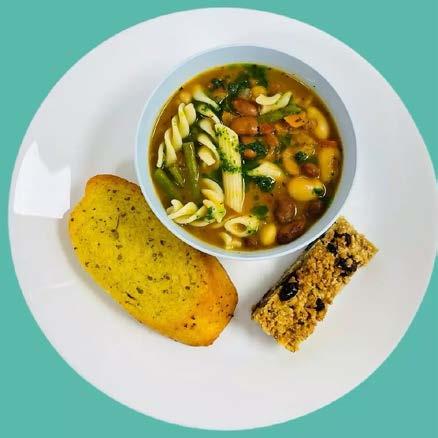
1 minute read
CASE STUDY
What works well at Woodmansterne:
Nicole, our co-founder and exec head chef, visits hundreds of schools. The dining experience at Woodmansterne School, in Streatham, is one of the best Nicole has seen.
Advertisement

Nicole says:
“THEY HAVE A HUGE SALAD AND VEGETABLE OFFERING, AND THE STUDENTS HAVE AUTONOMY THAT MEANS THEY CAN CHOOSE WHAT THEY WANT TO EAT. IT’S A GREAT DINING EXPERIENCE, YOU GET A SENSE OF THE ENJOYMENT AND PLEASURE AROUND THE FOOD, RATHER THAN IT JUST BEING FOR NUTRITION. THERE’S A LOT OF LEARNING OUTSIDE THE DINING HALL, TOO, AND THE STUDENTS ARE INVITED INTO THE KITCHEN. FOOD IS INTEGRATED INTO THEIR LEARNING AS MUCH AS POSSIBLE. IT FEELS LIKE THE KITCHEN IS AT THE HEART OF THE SCHOOL.”
Try Family Style Dining

Family-style dining is where the food is brought to the tables and served to the children. Students can be allocated tables, but also roles, such as one student who serves the food, and one who clears it away at the end of the meal. This is a great way to save time and get rid of long queues. The children also learn to serve their friends and clean the table – as well as learning about food waste. On top of this, the kitchen team will have more time to prepare for the following day, since the students are serving themselves.
Family-style dining can be used to make service easier for the youngest children – nursery, reception, and even year ones. This can be a case of giving the food to the teachers to serve at the table. This frees up an extra 20 minutes for the kitchen before the service fully begins – and you can do a lot in 20 minutes.
Different age groups can also eat together, rather than separating older and younger pupils.











